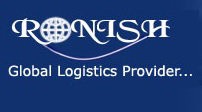
Emphasizing supply chain best practices is crucial for organizations navigating the rapidly evolving global marketplace, where they encounter numerous challenges that can influence their success.
The efficiency and resilience of the supply chain stand out as critical factors determining an organization’s ability to address these challenges. Adopting and adapting to these best practices is essential for achieving operational excellence and sustainable growth.
This post explores the key strategies and principles defining an effective supply chain, providing insights to empower businesses in thriving amidst a dynamic business environment.
1. End-to-End Visibility: Enhancing Decision-Making and Mitigating Disruptions
Achieving end-to-end visibility is pivotal for a streamlined and efficient supply chain. By leveraging advanced technologies such as the Internet of Things (IoT), Radio-Frequency Identification (RFID), and blockchain, organizations can gain real-time insights into every aspect of their supply chain operations.
This visibility not only improves decision-making but also facilitates the identification and mitigation of potential disruptions. With access to accurate and up-to-date information, businesses can proactively address issues and ensure the smooth flow of goods and services across the supply chain.
2. Demand Forecasting and Planning: Anticipating Market Needs with Accuracy
Accurate demand forecasting serves as the foundation for optimizing the supply chain. Through the utilization of data analytics, artificial intelligence, and machine learning, organizations can analyze historical data and market trends to anticipate demand fluctuations.
By aligning production and inventory levels with actual market needs, businesses can minimize excess inventory and reduce carrying costs. A robust forecasting system enables organizations to respond swiftly to changes in customer demand, ensuring that the right products are available at the right time and in the right quantities.
3. Supplier Relationship Management: Building Resilience through Collaboration
Nurturing strong relationships with suppliers, a fundamental supply chain best practice, is crucial in effective supply chain management. Open communication, collaboration, and transparency are essential for building a resilient supply chain network.
Regular assessments of supplier performance and effective risk management strategies ensure a stable and reliable supply of goods and services. By cultivating trust and fostering long-term partnerships, organizations can mitigate risks, improve supplier responsiveness, and drive operational efficiency.
4. Lean Inventory Management: Striking the Right Balance
Maintaining optimal inventory levels is a delicate balancing act for organizations. Adopting lean inventory management principles helps minimize carrying costs, reduce waste, and enhance responsiveness to market changes.
Just-in-time (JIT) inventory systems and efficient order fulfillment processes contribute to a more agile and cost-effective supply chain. By streamlining inventory management, organizations can reduce the risk of excess inventory, improve cash flow, and increase overall operational efficiency.
5. Technology Integration: Harnessing Innovation for Supply Chain Optimization
Embracing cutting-edge technologies is a hallmark of successful supply chain management. Automation, robotics, and data analytics play pivotal roles in optimizing various supply chain processes, from warehousing and transportation to order fulfillment.
Cloud-based solutions facilitate seamless collaboration among stakeholders, regardless of geographical locations. By harnessing the power of technology, organizations can streamline operations, enhance visibility, and improve decision-making, ultimately leading to a competitive advantage in the marketplace.
6. Risk Mitigation and Resilience: Proactively Managing Uncertainties
Building a resilient supply chain requires proactive risk management, including the identification and mitigation of potential internal and external risks. Supply chain best practices such as diversifying suppliers, implementing redundancy measures, and having a robust business continuity plan are crucial elements.
These practices collectively enhance the resilience of the supply chain, minimizing disruptions and ensuring operational continuity in unforeseen circumstances. Staying prepared and adaptable enables organizations to navigate challenges effectively within their supply chain networks.
7. Continuous Improvement: The Key to Supply Chain Excellence
A commitment to continuous improvement is central to achieving supply chain excellence. Regularly reviewing and refining processes, leveraging feedback from stakeholders, and staying abreast of industry innovations contribute to the agility and adaptability needed in a rapidly evolving business environment.
Organizations should embrace a culture of innovation and encourage employees to seek out opportunities for improvement. By continuously striving for excellence, businesses can stay ahead of the competition and drive long-term success.
Conclusion: Embracing Best Practices for a Resilient Supply Chain
In an era of constant change and increasing competition, supply chain best practices serve as a compass that guides organizations toward operational excellence.
By embracing end-to-end visibility, fostering strong relationships with suppliers, adopting lean inventory management, integrating advanced technologies, and prioritizing risk mitigation, businesses can build a resilient and responsive supply chain.
This not only helps them overcome current challenges but also positions them for sustained success in the future.
Remember, supply chain optimization is an ongoing process. By continuously evaluating and refining your practices, you can adapt to changing market conditions and position your organization for long-term growth and success.
